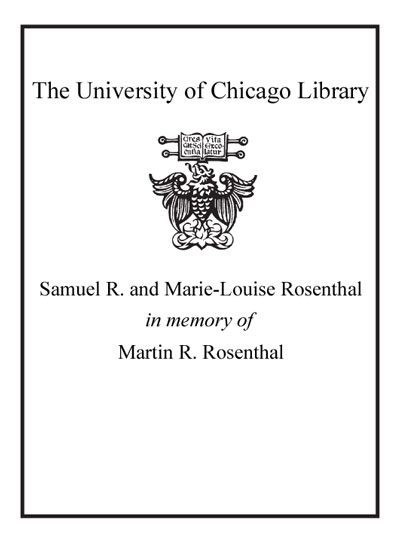Parties and elections in new European democracies /
Saved in:
| Author / Creator: | Rose, Richard, 1933- |
|---|---|
| Imprint: | Wivenhoe Park, Colchester : ECPR Press, 2009. |
| Description: | xii, 275 p. : ill. ; 24 cm. |
| Language: | English |
| Series: | ECPR press [general interest] |
| Subject: | |
| Format: | Print Book |
| URL for this record: | http://pi.lib.uchicago.edu/1001/cat/bib/8002687 |
Table of Contents:
- Preface: Understanding Elections
- Part 1. The Framework of Competition
- 1. Elite Supply and Mass Response: An Interactive Model
- Democratization Backwards-and in a Hurry
- Understanding Election Outcomes
- 2. Electoral Systems Compared
- Electing Representatives
- Effects of Electoral Systems
- 3. Parties Without Civil Society
- A Big Supply of Parties
- Competition Along Multiple Dimensions
- 4. Voters Without Trust
- A Legacy of Distrust
- Political Values Without Parties
- 5. Competition Without Institutionalization
- Institutionalization in Theory
- Stable Election Laws
- Floating Systems of Parties
- Institutionalizing an Incomplete Democracy
- References
- Part 2. National Election Results
- Conventions in Reporting Results
- 6. Bulgaria
- 7. Czechoslovakia
- 8. Czech Republic
- 9. Slovakia
- 10. Estonia
- 11. Hungary
- 12. Latvia
- 13. Lithuania
- 14. Poland
- 15. Romania
- 16. Slovenia
- 17. Russia
- Tables and Figures
- Part 1.
- Figure 1.1. From first free election to European Union entry
- Figure 1.2. Interactive model of election outcomes
- Table 2.1. Characteristics of electoral systems
- Table 2.2. Influences on turnout
- Table 2.3. Proportionality between votes and seats
- Table 2.4. Influences on proportionality
- Figure 3.1. Number of parties by country since 1990
- Figure 3.2. Average number of parties in an election
- Table 4.1. Distrust in parties high
- Figure 4.1. No party the most popular choice
- Table 4.2. Political outlooks of the electorate
- Figure 5.1. Few parties show stamina to persist since 1990
- Figure 5.2. Volatility of vote: founding and latest elections
- Figure 5.3. Supply-side actions chief cause of volatility
- Table 5.1. Getting rid of elections unlikely
- Part 2.
- Table 6.1. Bulgarian Political Parties
- 6.2a-d. Presidential Votes: 1992-2006
- 6.3a. Votes for the Narodno Sobranie
- 6.3b. Percentage of Votes for the Narodno Sobranie
- 6.3c. Number of Seats in the Narodno Sobranie
- 6.3d. Percentage of Seats in the Narodno Sobranie
- Table 7.1. Czechoslovak Political Parties, 1990-1992
- 7.2a. Votes for the Sn?movna Lidu
- 7.2b. Percentage of Votes for the Sn?movna Lidu
- 7.2c. Number of Seats in the Sn?movna Lidu
- 7.2d. Percentage of Seats in the Sn?movna Lidu
- Table 8.1. Czech Political Parties
- 8.2a. Votes for the Narodní Rada 1990-1992 and Poslanecká Sn?movna 1996
- 8.2b. Percentage of Votes for the Narodní Rada 1990-1992 and Poslanecká Sn?movna 1996
- 8.2c. Seats in the Narodní Rada 1990-1992 and Poslanecká Sn?movna 1996-
- 8.2d. Percentage of Seats in the Narodní Rada 1990-1992 and Poslanecká Sn?movna 1996
- Table 9.1. Slovak Political Parties
- 9.2a-b. Presidential Votes: 1999, 2004
- 9.3a. Votes for the Národná Rada
- 9.3b. Percentage of Votes for the Národná Rada
- 9.3c. Seats in the Národná Rada
- 9.3d. Percentage of Seats in the Národná Rada
- Table 10.1. Estonian Political Parties
- 10.2. Presidential Vote: 1992
- 10.3a. Votes for the Riigikogu
- 10.3b. Percentage of Votes for the Riigikogu
- 10.3c. Number of Seals in the Riigikogu
- 10.3d. Percentage of Seats in the Riigikogu
- Table 11.1. Hungarian Election: 4 November 1945
- 11.2. Hungarian Political Parties
- 11.3a. Votes for the Országgyølés
- 11.3b. Percentage of Votes for the Országgyølés
- 11.3c. Number of Seats in the Országgyølés
- 11.3d. Percentage of Seats in the Országgyølés
- Table 12.1. Latvian Political Parties
- 12.2a. Votes for the Saeima
- 12.2b. Percentage of Votes for the Saeima
- 12.2c. Number of Seats in the Saeima
- 12.2d. Percentage of Seats in the Saeima
- Table 13.1. Lithuanian Political Parties
- 13.2a-d. Presidential Votes: 1993-2004
- 13.3a. Votes for the Seimas
- 13.3b. Percentage of Votes for the Seimas
- 13.3c. Number of Seats in the Seimas
- 13.3d. Percentage of Seats in the Seimas
- Table 14.1. Polish Constitutional Referendum, 25 May 1997
- 14.2. Polish Political Parties
- 14.3a-d. Presidential Votes: 1990-2005
- 14.4a. Votes for the Sejm
- 14.4b. Percentage of Votes for the Sejm
- 14.4c. Number of Seats in the Sejm
- 14.4d. Percentage of Seats in the Sejm
- Table 15.1. Romanian Political Parties
- 15.2a-e. Presidential Votes: 1990-2004
- 15.3a. Votes for the Camera Deputatilor
- 15.3b. Percentage of Votes for the Camera Deputatilor
- 15.3c. Number of Seats in the Camera Deputatilor
- 15.3d. Percentage of Seats in the Camera Deputatilor
- Table 16.1. Slovenian Political Parties
- 16.2a-e. Presidential Votes: 1990-2007
- 16.3a. Votes for the Dr avni Zbor
- 16.3b. Percentage of Votes for the Dr avni Zbor
- 16.3c. Number of Seats in the Dr avni Zbor
- 16.3d. Percentage of Seats in the Dr avni Zbor
- Table 17.1. RSFSR Presidential Vote: 12 June 1991
- 17.2. Vote on Russian Constitution: 12 December 1993
- Figure 17.1. Disproportionality in Duma Votes and Seats
- Table 17.3. Russian Political Parties
- 17.4a-d. Presidential Votes: 1996-2008
- 17.5a. List Votes for the Duma
- 17.5b. Votes in Single-Member Districts for the Duma
- 17.5c. Number of Seats in the Duma
- 17.5d. Percentage of Seats in the Duma

